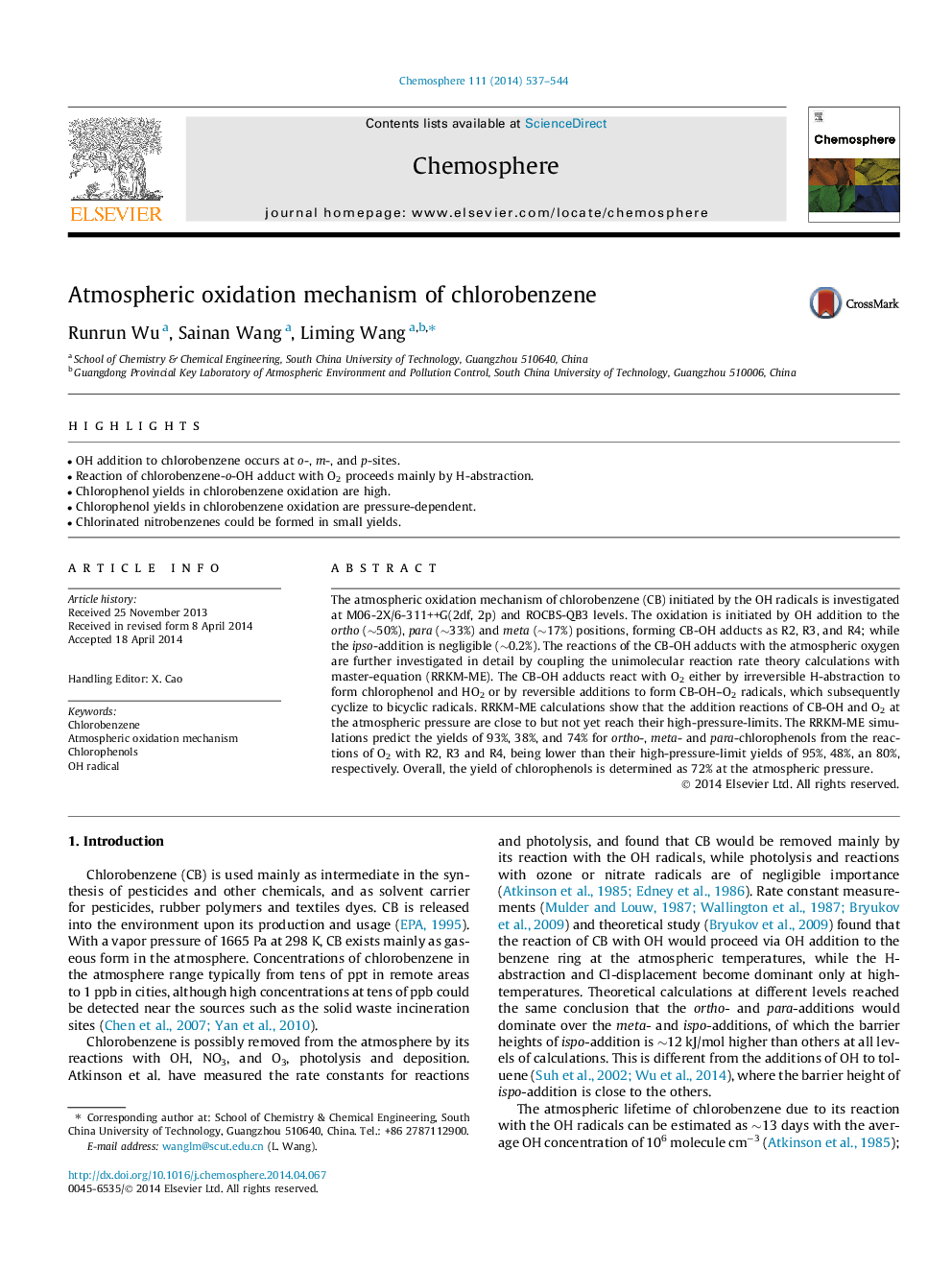| Article ID | Journal | Published Year | Pages | File Type |
|---|---|---|---|---|
| 6308724 | Chemosphere | 2014 | 8 Pages |
Abstract
The atmospheric oxidation mechanism of chlorobenzene (CB) initiated by the OH radicals is investigated at M06-2X/6-311++G(2df, 2p) and ROCBS-QB3 levels. The oxidation is initiated by OH addition to the ortho (â¼50%), para (â¼33%) and meta (â¼17%) positions, forming CB-OH adducts as R2, R3, and R4; while the ipso-addition is negligible (â¼0.2%). The reactions of the CB-OH adducts with the atmospheric oxygen are further investigated in detail by coupling the unimolecular reaction rate theory calculations with master-equation (RRKM-ME). The CB-OH adducts react with O2 either by irreversible H-abstraction to form chlorophenol and HO2 or by reversible additions to form CB-OH-O2 radicals, which subsequently cyclize to bicyclic radicals. RRKM-ME calculations show that the addition reactions of CB-OH and O2 at the atmospheric pressure are close to but not yet reach their high-pressure-limits. The RRKM-ME simulations predict the yields of 93%, 38%, and 74% for ortho-, meta- and para-chlorophenols from the reactions of O2 with R2, R3 and R4, being lower than their high-pressure-limit yields of 95%, 48%, an 80%, respectively. Overall, the yield of chlorophenols is determined as 72% at the atmospheric pressure.
Keywords
Related Topics
Life Sciences
Environmental Science
Environmental Chemistry
Authors
Runrun Wu, Sainan Wang, Liming Wang,
